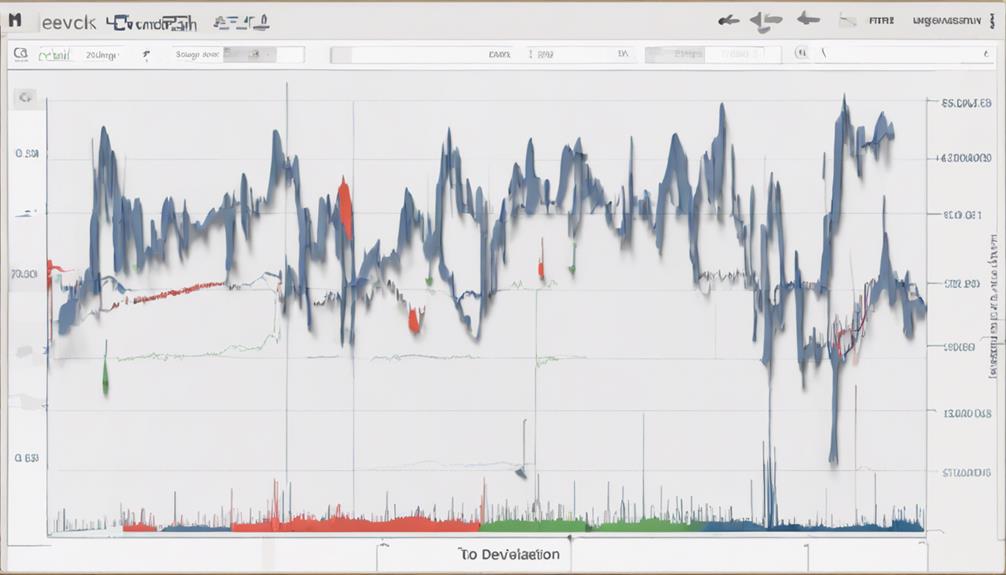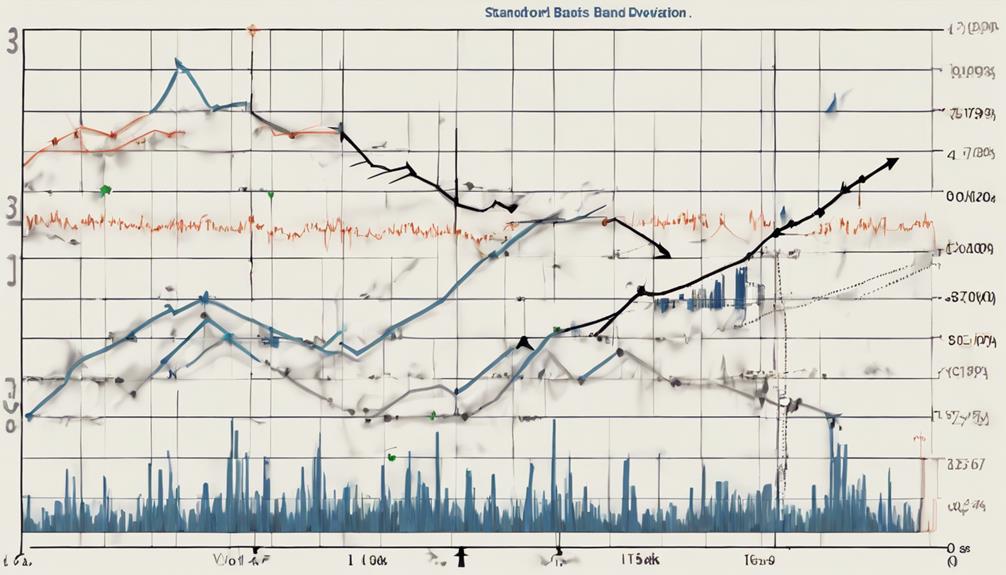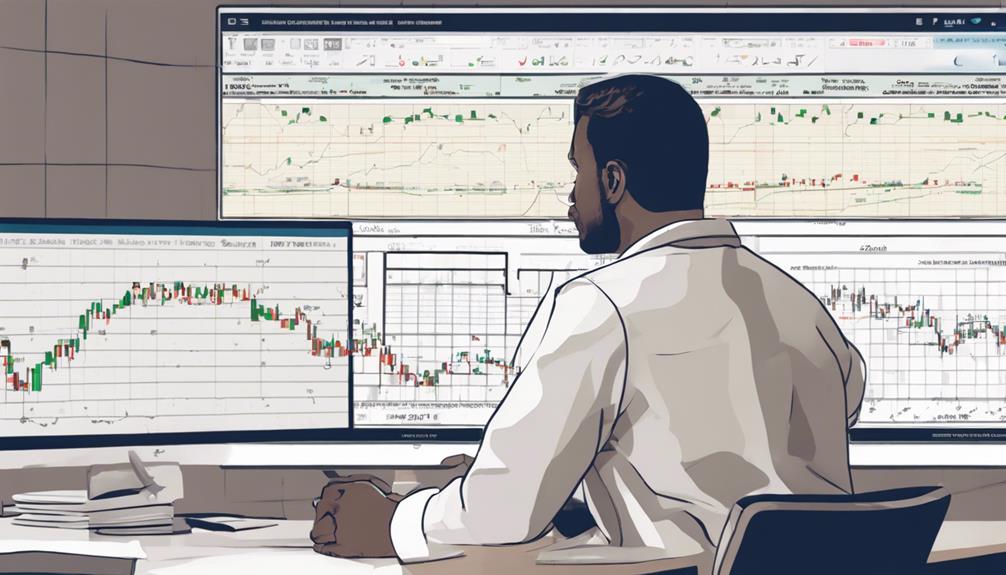Understanding standard deviation is paramount for traders seeking to navigate the complexities of market fluctuations. With its pivotal role in risk evaluation and strategy formulation, mastering standard deviation is essential for informed decision-making in trading.
However, the intricacies of applying this statistical concept effectively can be challenging for many. In this guide, we will unravel the nuances of standard deviation in trading, shedding light on its practical implications and providing actionable insights for enhancing trading performance.
What Is Standard Deviation?
Standard deviation is a statistical measure that quantifies the extent of dispersion or variability of data points from the mean average. In the context of trading and market dynamics, standard deviation serves as a crucial measure of volatility and variability. A higher standard deviation indicates increased market volatility and the potential for significant price fluctuations. By calculating standard deviation, traders can assess the level of risk present in a particular asset or market, enabling them to make more informed decisions regarding risk management and trading strategies.
Understanding standard deviation is essential for traders as it provides a quantitative way to evaluate the potential price movements and uncertainty within a market. By incorporating standard deviation into their analysis, traders can set profit targets, establish risk parameters, and develop effective trading strategies that account for market volatility. Overall, standard deviation plays a fundamental role in risk assessment and management within the realm of trading, offering valuable insights into the potential variability of market prices.
Utilizing Standard Deviation in Trading

Utilizing the insights gained from understanding standard deviation, traders can effectively navigate market fluctuations and make informed decisions to optimize their trading strategies and risk management techniques. Standard deviation plays a crucial role in the financial markets by providing a quantifiable measure of historical volatility, allowing traders to assess the variability of asset prices over a specific period.
When utilized in trading, standard deviation helps in managing risk by setting stop-loss and take-profit orders based on the level of volatility observed. Furthermore, traders can gauge market stability through standard deviation, where higher values indicate increased volatility, while lower values suggest more predictable price movements.
By incorporating standard deviation into their analysis, traders can enhance their decision-making process and develop more robust trading strategies to capitalize on market opportunities while mitigating potential risks effectively.
- Assessing historical volatility
- Managing risk in trading strategies
- Setting stop-loss and take-profit orders
- Gauging market stability
- Enhancing decision-making processes
Calculating Standard Deviation

To compute standard deviation accurately in trading analysis, one must first determine the mean average closing price and calculate the respective deviations for each period. After obtaining these deviations, squaring each deviation, summing the squared deviations, and dividing by the number of periods yields the variance.
The standard deviation, as the square root of the variance, provides insight into the spread of values in the dataset. It serves as a crucial metric for quantifying variation from the mean average and assessing the level of volatility present in the asset's price movements.
Understanding and calculating standard deviation are essential components in evaluating historical volatility, interpreting market momentum, and implementing effective risk management strategies in trading. By grasping the nuances of standard deviation and its calculation, traders can make informed decisions based on statistical measures that capture the inherent variability within financial markets.
Implementing Trading Strategies With Standard Deviation

Building upon the foundation of calculating standard deviation in trading analysis, the implementation of trading strategies with standard deviation offers traders a systematic approach to evaluating market dynamics and making informed decisions. When incorporating standard deviation into trading strategies, traders can benefit from:
- Setting realistic price targets based on historical volatility.
- Managing risk effectively through the use of stop-loss orders.
- Identifying optimal entry and exit points by evaluating market momentum.
- Adjusting positions according to asset volatility for better risk management.
- Balancing risk versus return by utilizing standard deviation in improving overall trading strategies.
Recognizing Limitations of Standard Deviation

Standard deviation, while a valuable tool in trading analysis, comes with inherent limitations that traders must recognize to make well-informed decisions in the financial markets. This statistical measure of how much individual values in a data set deviate from the average squared is commonly used to assess the volatility of different assets.
However, it is crucial to understand that standard deviation is a measure that relies on the assumption of a normal distribution, which may not always hold true in complex financial markets. Moreover, outliers in data can significantly impact standard deviation calculations, potentially distorting the results and leading to misinterpretations.
Additionally, as a backward-looking indicator, standard deviation is less reliable for predicting future price movements and might not capture sudden market shifts or extreme events effectively. To mitigate these limitations, traders should supplement the use of standard deviation with other risk assessment tools and indicators to obtain a more comprehensive analysis of market conditions.
How Can I Apply Standard Deviation in Trading and Investment Decisions?
One way of using standard deviation in investment is to measure the volatility of a stock or portfolio. By calculating the standard deviation of returns, investors can assess the level of risk associated with a particular investment. This information can help in making informed trading and investment decisions.
Frequently Asked Questions
How Do You Trade With Standard Deviation?
Trading with standard deviation involves utilizing it to measure market volatility, manage risk through stop-loss and take-profit orders, identify entry/exit points, gauge market momentum, and enhance trading analysis accuracy by combining it with other technical indicators.
What Is the Easiest Way to Understand Standard Deviation?
Understanding standard deviation involves grasping the concept of data dispersion from the mean. It quantifies variability in a dataset, aiding in risk assessment and price movement prediction. Calculating it involves the square root of variance for data spread determination.
What Is an Acceptable Standard Deviation for a Stock?
An acceptable standard deviation for a stock typically falls within the range of 10-20%, indicating moderate to high volatility. Below 10% suggests lower risk and stability, while above 20% signifies greater risk and volatility, catering to diverse investor preferences and objectives.
How Do You Analyze Standard Deviation?
Analyze standard deviation by scrutinizing price movement variability. It aids in gauging risk levels and market volatility, enabling informed decision-making in trading. Utilize standard deviation for setting profit targets and stop-loss levels, crucial for anticipating price shifts.
Conclusion
In the intricate world of trading, standard deviation serves as a powerful tool for evaluating risk and volatility. By understanding its calculations, applications, and limitations, traders can make informed decisions to navigate market fluctuations with confidence.
Like a compass guiding a ship through turbulent waters, standard deviation provides direction amidst uncertainty, enabling traders to steer their portfolios towards success. Mastering this concept is essential for those seeking to thrive in the ever-changing landscape of the financial markets.
